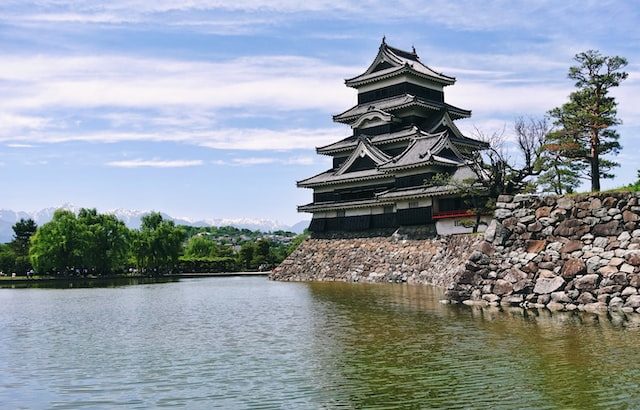Nagano Prefecture has always been the quintessential destination of choice for people wanting to escape the summer heat in central Japan. While you’ll never run out of fun things to do while in Nagano, a visit to the famed Matsumoto Castle is something you simply cannot miss. Listed as one of Japan’s National Treasures, the elegant castle is widely known for its striking black paneling. So striking it is in fact, that it has earned the castle a nickname — the Crow Castle.
One of Japan’s oldest castles, it’s also one of the country’s most beautiful structures. Located at the heart of Matsumoto City, it is one of only twelve completely original castles in the country. It’s easy to get to too, as it is only 160 minutes away from Tokyo.
Japan is remarkably known for having preserved many of its magnificent historical castles. However, a good number of them were rebuilt after many have been destroyed by wars, fires, and natural disasters. Matsumoto Castle, on the other hand, remains unchanged over the years.
History of Matsumoto Castle
The donjon or wooden keep of Matsumoto Castle, which is remarkably painted in black is known as Japan’s oldest surviving keep. Historical records show that the keep has been around since 1595. The striking black coloring of the castle has earned it the “Karasu-jo” nickname which translates to “Crow Castle”.
There is a reason for the castle’s notable black paint. Most castles in Japan back in the day were built to serve as defense structures against enemy attacks. And Karasu-jo is no exemption. Its black paint was deliberately selected to create a somber and brooding atmosphere. This is intended to intimidate approaching attackers.
Another notable thing about the castle is how it is constructed on flat ground. This has earned it the classification of being a flat-land castle or “hirajiro”. To bolster its defense, the castle was built with thick walls. A large moat surrounding the structure also reinforces this.
The fortress that was to become the castle that it is now known today was constructed in 1504. Around the mid-1590s however, Kazumasa Ishikawa remodeled the castle. The castle structures which have remained today have stayed the same since then.
Aside from its notable six floors, the 30-meter castle also has a hidden floor — a feature that many Japanese castles also share. The floor is intended as a samurai resting place and storage area for their food and ammunition. It also served as the hiding place for the castle lord whenever they are under siege. During its construction, the castle was not intended to serve as a permanent residence. Rather, it was constructed purely for military purposes. Today, visitors to the castle can climb up its steep wooden steps. Magnificent views of the Japanese Alps can be seen on this part of the structure.
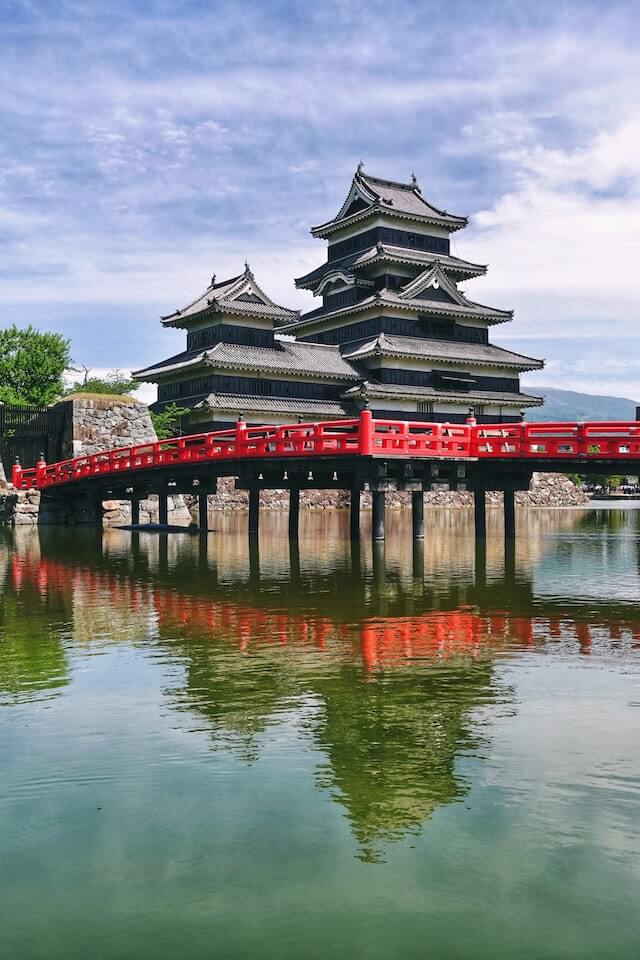
Not many crows in the Crow Castle
What’s interesting about the Crow Castle is how there don’t seem to be a lot of crows around it. The castle did, however, earned its nickname thanks to its black exterior. When seen from the distance, the black walls of the castle tower and main keeps very much resemble a crow spreading its wings.
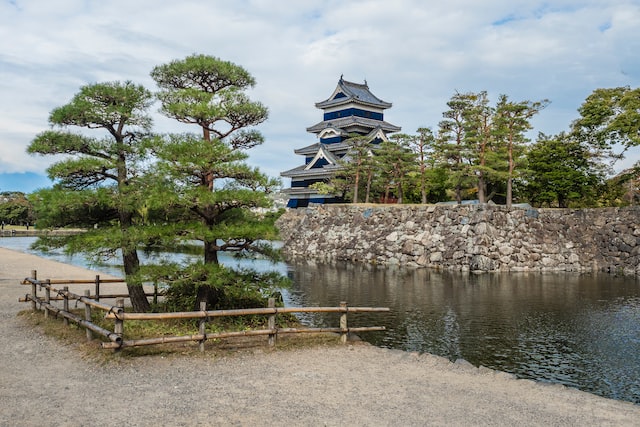
The castle is one visually stunning structure. And what’s even more fascinating is that its structures have remained unchanged in their original state since they were remodeled in the 1590s. At more than 400 years old, it is also the oldest castle in the country and has been a witness to its tumultuous history. Even more impressive is its keep still has the original external stonework and wooden interiors dating as far back as the 16th century.
It used to be a leaning castle
While the castle is popularly known for its impressively resilient structure, there was a point in history when it started to lean on one side. Around the second half of the Meiji period, the castle started to show a very noticeable tilt. This was mainly due to neglect. At the time, the castle has also suffered from structural problems which contributed to the tilt.
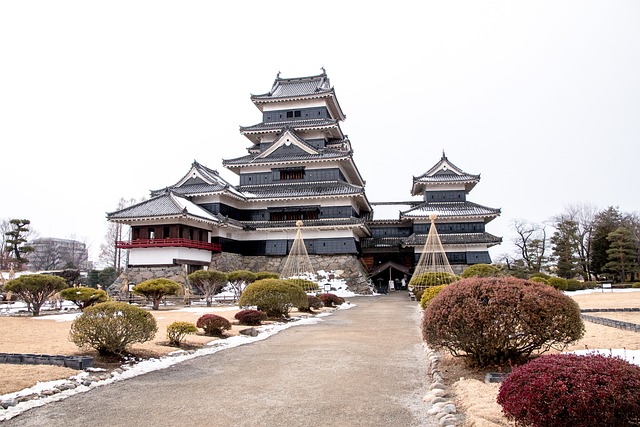
At the time, however, superstitious people believed that this may have to do with the curse associated with the castle. To address the issue, the castle underwent two civic restorations. The first instance was between 1903-1913 during the Meiji era. To correct other damages, the castle went through a second restoration period during the Showa period which lasted from 1950-1955.
There is a curse associated with the castle
During the 17th century, a wealthy farmer named Tada Kasuke protested against the raised taxes implemented by the feudal daimyo at the time. Along with 27 other farmers residing in the region, they wrote a protest letter and had it sent to the magistrate of the castle. Eventually, the protest turned into a riot known as the Jokyo Uprising. Eventually, the local daimyo relented and promised the farmers that the taxes will be reduced through a written document.
Out of the blue, however, the protesters were executed without a proper trial. Before his execution, however, Tada Kasuke cursed the Mizumo family — the ruling clan at the time. He wished them ill luck for the next 200 years which also got attached to their then residence, Matsumoto Castle. In their attempt to break the farmer’s curse, the Mizumo family decided to donate a statue in his honor to a shrine nearby. There, he is honored for his efforts in fighting for human rights.
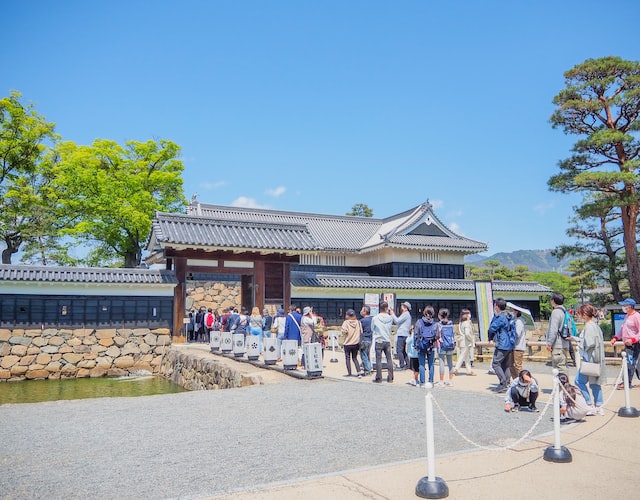
Perfect spot to visit no matter the season
What’s great about the castle is that it seems to be the perfect spot to visit no matter the time of the year. Spring is a particularly popular time to visit the castle as the castle park is one of the perfect spots for hanami with its beautiful cherry blossoms. There is a Cherry Blossoms Viewing Night event in the castle where the public can get access to the castle’s Honmaru Garden for free.
In the summer, the castle plays host to performances and plays including the Takiginou festival and the Taiko Drum Festival. The castle’s opening hours also get extended and if you want to gain free entry to the castle, just make sure to wear traditional Japanese clothing!
During autumn, the castle park is engulfed in wonderful hues of yellows, oranges, and reds as the trees don their impressive autumn colors. Among the most anticipated events in the castle include doo festivals, tea ceremonies, and artillery demonstrations among others.
Matsumoto Castle is even more magnificent in winter! Its black coloring plays contrast with its pristine white surroundings and the resulting scenery is nothing short of enchanting! During the end of the year celebrations, the castle grounds get filled with a huge decoration known as kadomatsu. Traditional decors meant to ward off evil are also put up in and around the castle. During the new year, locals dressed in their best kimonos visit the castle to pay their respects.
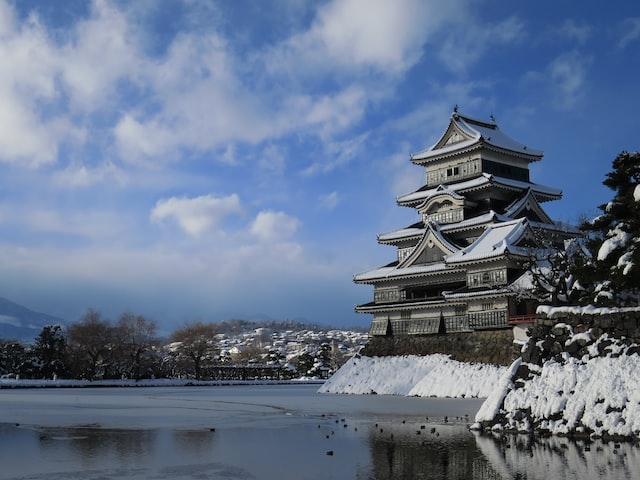
A symbol of Japanese history and culture
Those fascinated with Japanese culture and history will never want to miss out on the chance to see Matsumoto Castle up close and personal. Epically historic and stunningly beautiful, it is one of the best representations of the country’s impressive architecture. The fact that it has managed to survive countless assaults, brutal wars, and numerous tumultuous periods of the country’s history in its more than 400 years of history, has certainly earned its distinction of being a National Treasure!
